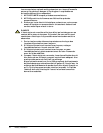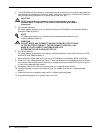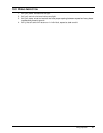
18 Wiring Considerations
8.0 WIRING CONSIDERATIONS
Refer to Appendix A - Site Planning Data and installation drawings in Figure 7 through
Figure 42. Determine AC currents for your system (kVA, voltage, and options). Also refer to
equipment nameplate for the model number, rating, and voltage. For wire termination data, refer
to Table 1 and Appendix B - Field Supplied Lugs.
!
WARNING
ALL POWER CONNECTIONS MUST BE COMPLETED BY A
LICENSED ELECTRICIAN THAT IS EXPERIENCED IN WIRING
THIS TYPE OF EQUIPMENT. WIRING MUST BE INSTALLED IN
ACCORDANCE WITH ALL APPLICABLE NATIONAL AND LOCAL
ELECTRICAL CODES. IMPROPER WIRING MAY CAUSE
DAMAGE TO THE EQUIPMENT OR INJURY TO PERSONNEL.
VERIFY THAT ALL INCOMING HIGH AND LOW VOLTAGE
POWER CIRCUITS ARE DE-ENERGIZED AND LOCKED OUT
BEFORE INSTALLING CABLES OR MAKING ANY ELECTRICAL
CONNECTIONS.
NOTE
Use 75°C copper wire. Select wire size based on the ampacities in Table 3
of this manual, a reprint of Table 310-16 and associated notes of the
National Electrical Code (NFPA 70).
!
CAUTION
The weight of power cables must be adequately supported to
avoid stress on bus bars and lugs. In addition to weight support,
the following restraining method is recommended to control cable
movement during external fault conditions: Wrap line cables
together at 6 inches and 12 inches from the terminals with 5
wraps of 3/8 inch nylon rope or equivalent (tensile strength of
2000 pounds). Support remainder of cable with 5 wraps every 6
inches or 1 wrap every 1 inch.


















